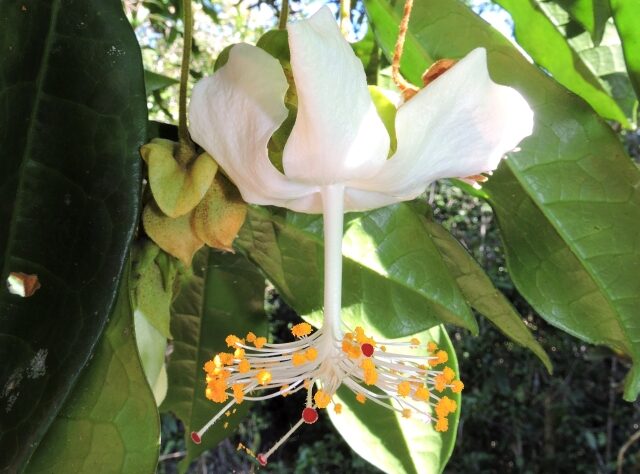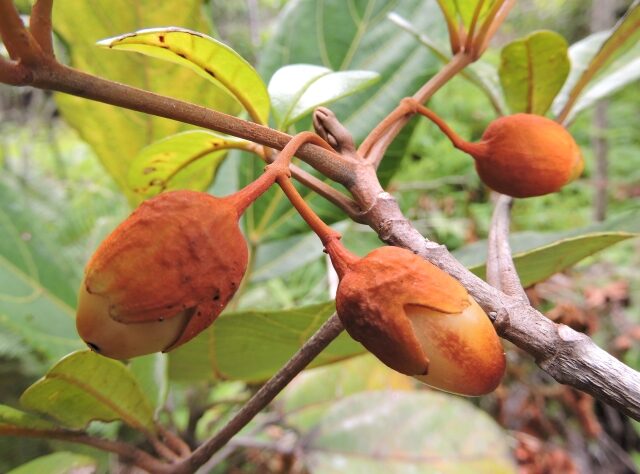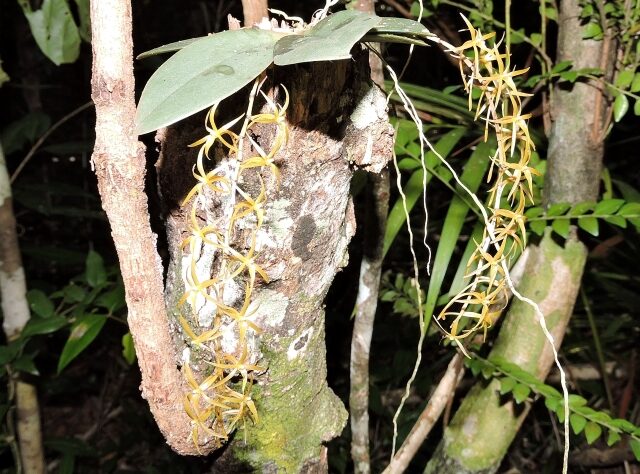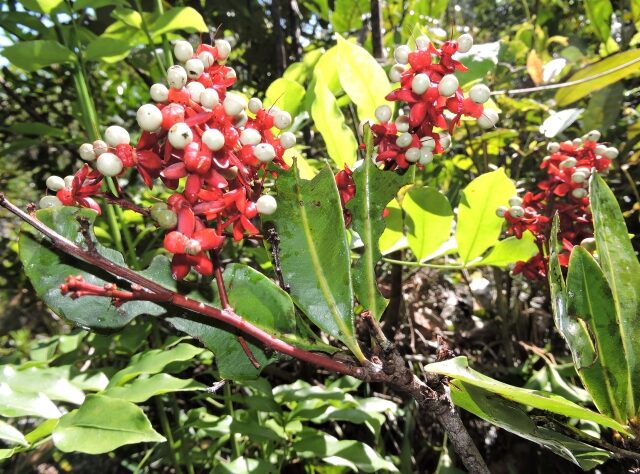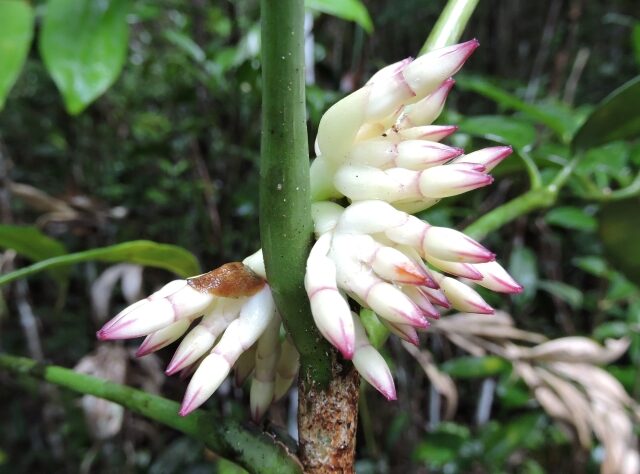Protecting the last home of lemurs in the Vangaindrano District
Thank you!
Thanks to your support and generous donations, we’re delighted to announce that our Madagascar: A Forest for the Future appeal has reached its £586,250 target!
READ MORE
Madagascar needs your help! This unique island is one of the most biodiverse places on Earth. Evolving in isolation for 88 million years, today 82% of its plants and 90% of its animals are found nowhere else. But after centuries of deforestation, this extraordinary wildlife is now under serious threat.
Up to 90% of Madagascar’s natural habitats have already been lost, and in the Vangaindrano District, just a single forest remains: Ankarabolava-Agnakatrika. It’s the last home of lemurs in this area, a nesting site for threatened hawks, a treasure trove of strange rare plant species and an indispensable resource for the local Antesaka people.
By joining World Land Trust and the Missouri Botanical Garden’s Madagascar Programme (MBG-Madagascar), you can help to expand this precious habitat by 200 ha, restoring degraded land with 500,000 native trees and bringing 1,000 new jobs to local communities. Natural disasters and human exploitation are threatening the forest’s survival, but with your help, we can secure its future.
A forest of critical importance
A remnant of the vast rainforest belt that once covered much of eastern Madagascar, Ankarabolava-Agnakatrika is the Vangaindrano District’s last standing forest. Since 2009, MBG-Madagascar has been working with the Antesaka people to preserve this hugely important habitat, which provides them with food, medicinal plants, and the materials to build their homes. It is also a key water source, feeding rivers and streams that irrigate the local crops.
In 2015 our partner established the Ankarabolava-Agnakatrika Protected Area, which today stands at 1,562 ha in size. By dedicating some sections to conservation and others to sustainable resource use, MBG-Madagascar has allowed this forest to flourish alongside the wellbeing and livelihoods of Antesaka communities. Threats still remain, however, from cyclones and wildfires to charcoal production and timber extraction. Until we reinforce this integral forest, its future will be in doubt.
Our project area is also the only place in the heavily deforested Vangaindrano District where lemurs – the most threatened group of mammals on Earth – still survive. MBG-Madagascar has sighted at least six species here, including one that could be new to science. These lemurs rely on a highly diverse forest made up of 295 plant species, some of which were first discovered here. Sharing the treetops are more than 50 bird species, including the Madagascar Sparrowhawk (Near Threatened) and Henst’s Goshawk (Vulnerable).
“If we lose areas like Ankarabolava-Agnakatrika, species could be lost before being described,” says Chris Birkinshaw, MBG-Madagascar’s Technical Advisor. “There really is nowhere like Madagascar in terms of species discovery.”
The impact of your donations
As a supporter of WLT’s new appeal, you can help MBG-Madagascar to create a 200 ha buffer zone for Ankarabolava-Agnakatrika, restoring land in seven strategic locations around the forest. This project will prove vital here in coastal Madagascar, where cyclones damage forests (increasing the risk of wildfires) and cause crop failures that drive unsustainable exploitation of forest resources.
With a donation to Madagascar: A Forest for the Future, you can:
• Restore degraded habitat for threatened lemurs, hawks, orchids and others
• Increase the forest’s resilience to natural disasters
• Safeguard the forest with patrols led by MBG-Madagascar rangers
• Provide income for farmers whose land is no longer productive
• Secure sustainable employment for 1,000 local people
The crucial buffer zone will be made up of degraded and deforested areas purchased from willing local landowners. MBG-Madagascar will be collaborating with a codina (a local committee) that will oversee all land purchases and manage community resource use. Along with many tree-planting jobs, our appeal will also fund 12 new rangers to patrol and protect Ankarabolava-Agnakatrika for a minimum of five years. As part of the project, MBG-Madagascar will be training around 30 new plant nursery staff, who can later use their skills to run their own nurseries as a source of income.
Lemurs: Gardeners of the forest
Madagascar’s most famous wild residents are the lemurs, an ancient group of primates native only to this unique island. Lemur-like animals first emerged around 70 million years ago, and modern lemurs still retain ancestral characteristics that distinguish them from most other primates, like longer snouts, better night vision, and a specialised “toothcomb”. There are an estimated 112 species of lemur living today, almost all of which (98%) are threatened with extinction. 31% are Critically Endangered – one step away from being declared Extinct in the Wild.
Protecting lemurs is one of the most urgent conservation priorities in Madagascar, and that’s not just for their sake. Lemurs play a crucial ecological role as seed dispersers – without them, the future of Madagascar’s forests and all they provide for both people and wildlife would be in jeopardy. As the island’s largest fruit-eaters, lemurs can swallow seeds that smaller birds or bats are unable to, making them the primary or indeed the only seed disperser for many plant species in Madagascar, including some of the largest canopy trees.
At Ankarabolava-Agnakatrika, you can protect the home of at least six lemur species, including as yet unidentified species of dwarf lemur and mouse lemur.
Click the images below to find out more about these threatened primates.
A botanical bonanza
Comprised of a very rare vegetation type – low-elevation humid forest on basalt – Ankarabolava-Agnakatrika is home to some equally rare plants, including Hibiscus vohipahensis. Discovered right here in our project area and yet to be found anywhere else on Earth, its survival rests entirely on the future of this forest. There is also the Sylvichadsia grandidieri tree, known from Ankarabolava-Agnakatrika and just one other protected area; the Critically Endangered palms Dypsis elegans Beentje and Dypsis singularis Beentje; and the threatened orchid Aerangis seegeri Senghas.
Home to 11,500 plant species, Madagascar’s floral diversity is truly exceptional, and our understanding of it continues to grow every year. More plants are discovered annually in Madagascar than in any other country, and MBG-Madagascar believes an astonishing 3,000 are still unknown to science. The Ankarabolava-Agnakatrika project represents “the last chance to save any vestige of what would have been a massive forest spread across the whole district,” says Chris Birkinshaw, MBG-Madagascar’s Technical Advisor. Although many plants will have been lost forever, we can secure a safe future for those that remain – and save those that still lie undiscovered, hidden in the depths of the forest.
“We as Malagasy, the people of Madagascar, want to have the power and the responsibility to save our natural heritage for future generations. With your help, we can restore the integrity of this forest, and revive its biodiversity.”
Jeannie Raharimampionona
Conservation Unit Manager, MBG-Madagascar

